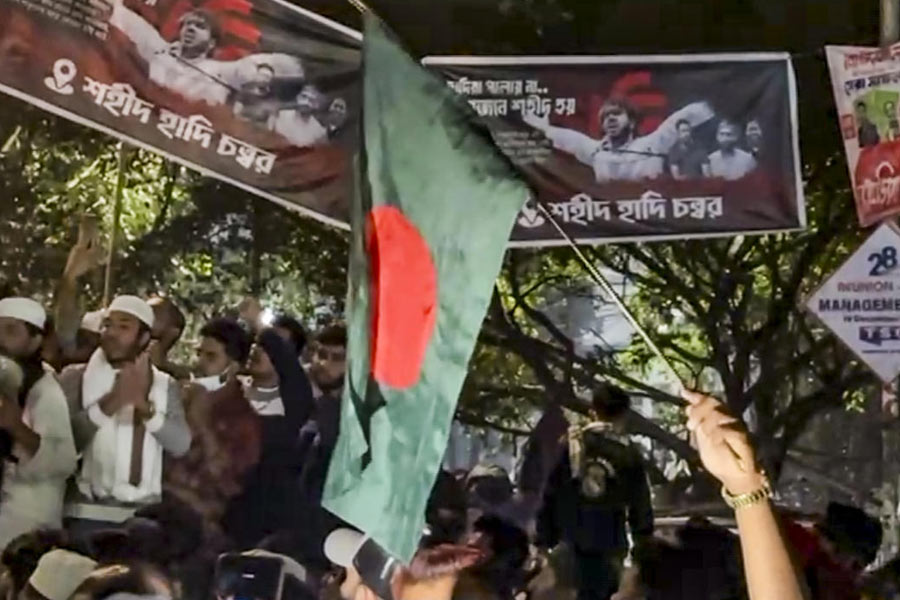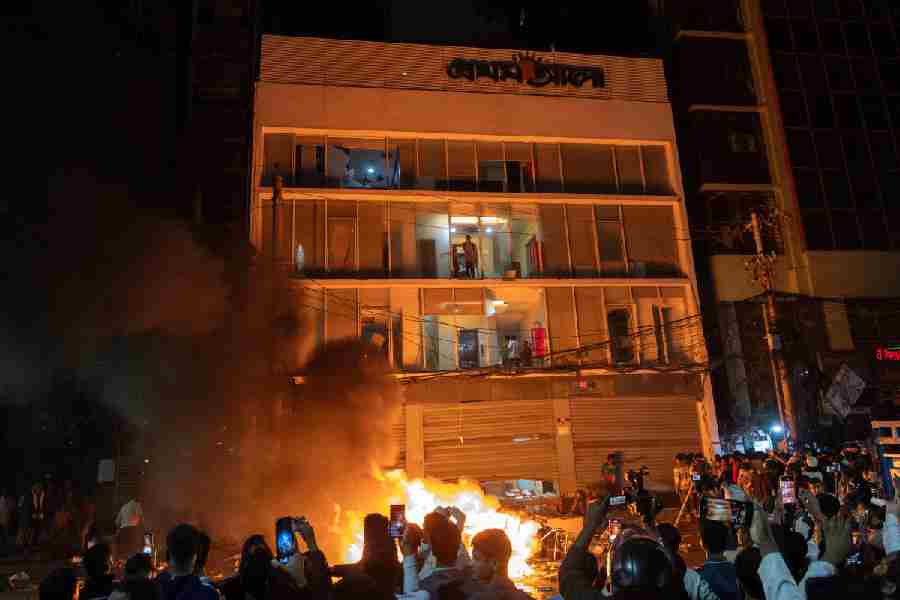 |
| Kabir Suman presented some of his latest compositions at the Mukhomukhi concert |
It was a platform with a difference for both Kabir Suman and Lopamudra Mitra. Hosted by Mukhomukhi to mark the birth centenary of Ramkinkar Beij, the concert at Rabindra Sadan on June 18 brought together for the first time on stage two of the leading exponents of contemporary Bengali music. To appreciate their music, there was an audience quite different from average consumers of Bengali music.
Mitra was moving freely between Rabindrasangeet and songs inspired by poems and contemporary compositions by Samir Chattopadhyay, Kabir Suman and others. The romantic number, Baire khub megh karechhe, was rendered with all the care and cadence that love commands. The slow waltz of Tumi shuno na amaar katha discovered forbidden love. This Suman number, in spite of its intense lyrical appeal and intoxicating melodic pattern, is rarely heard in Mitra’s concerts. The next song, Tagore’s Jadi prem dile na prane, delivered sans rhythm alongside Joy Sarkar’s low-pitched string support, was the icing on the cake.
Her final offering, Thik jekhane diner shuru ? John Lennon’s Imagine reworked by Saikat Kundu ? found Mitra on the age-old humanist track. She could have reserved her own Utopian vision for some other day.
Listening to Suman after a long break was refreshing. Contemporary issues continue to inspire his new compositions, though the Bard of the Roaring Nineties has mellowed considerably. He was happy to play second fiddle to Mitra in Madhugandhe bhara mridu snigdhachhaya. It was definitely a memorable duet.
The audience was also treated to some of Suman’s latest compositions. His empathy for marginalised rural folks was evident in Karor baba chayer dokan den. It was a toast to all those poor children who defy all odds to keep studying. His popular adaptation of Bob Dylan’s Blowin’ in the wind took a different connotation when placed in the context of the plight of Indian minorities. Towards the end of the concert, he switched to Himanshu Dutta, Salil Chowdhury and Sudhin Dasgupta compositions. The piano provided a fine sonic ambience for the understated tragedy of Prantarer gaan amaar. In between came Tagore’s Amaar abhimaner badale, soaked in the pathos only a few can evoke.
The week-long Ramkinkar tribute also featured a couple of programmes on poetry, music and fine arts.
Dhusar Prithibi, held at Rabindra Sadan on June 12, attempted a sort of creative collaboration among musicians Debajyoti Bose and Bikram Ghosh, painter Samir Aich and cinematographer Avijit Dasgupta. It was quite disappointing. Conceived by Bose, the show unfolded with his slow development of raga Puriya Kalyan on sarod. At one corner of the stage, Aich used his flat brush dipped in primary colours to paint an abstract representation of the evening melody. Bose picked up his tempo, Ghosh got going as Aich’s canvas settled for an formalist idiom. Dasgupta and his men recorded the action live on large screen projection. The evening ended in the strains of raga Behaag, but the much-sought-after artistic synergy was simply not there.
The programme at Sisir Mancha on June 15 saw poets Chitra Lahiri and Srijato joining forces with actress Madhavi Mukhopadhyay in an ensemble titled Anya Kotha Anya Konokhane. photographySujoy Das










